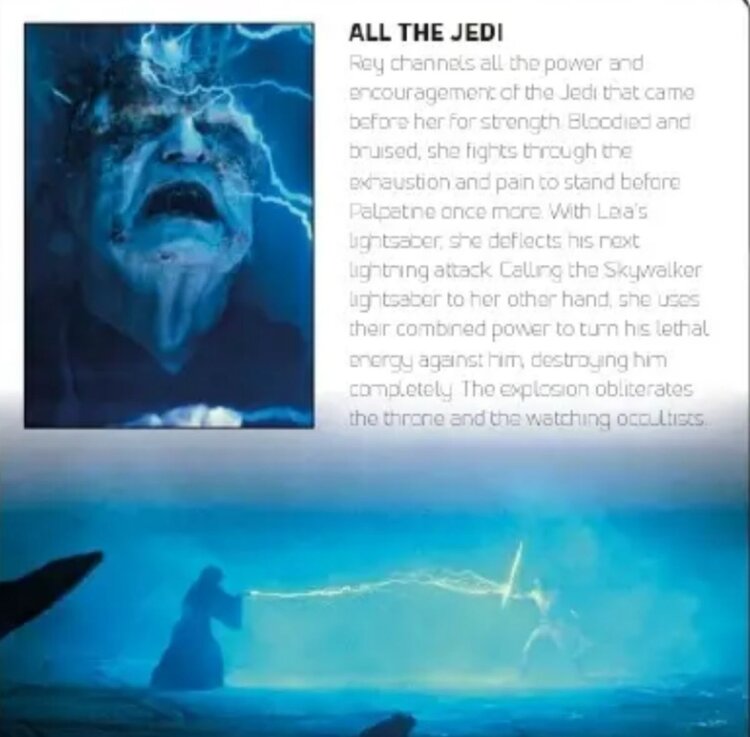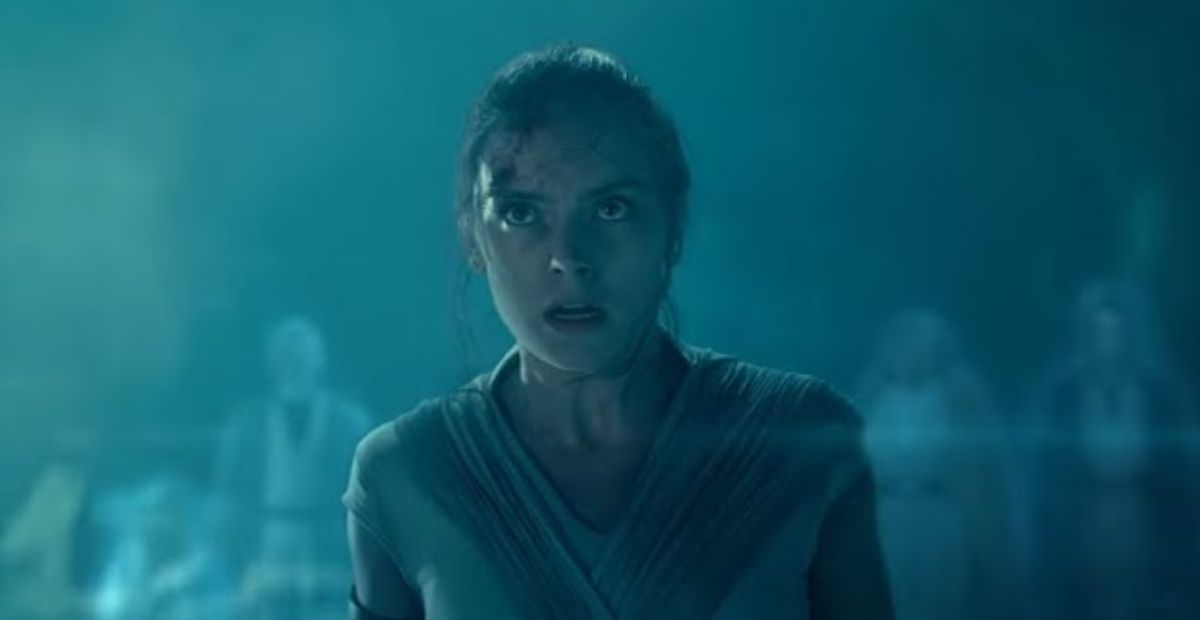The Rise of Skywalker concluded with Rey pronouncing how she had the backing of the Jedi to overthrow Palpatine. As fans, we may have speculated about this moment and whether Rey was actually drawing on the powers of the Jedi. In fact, she was channeling the power of the Jedi and defining her character at the same time.
The Power of the Jedi and Rey
Based on this discussion, we might think that the ending of The Rise of Skywalker has been universally met with fan scorn. We may believe that Rey and Palpatine’s sparring of words about being “all the Sith” and “all the Jedi,” respectively, was cliché and unoriginal. And, we could add it to the list of other problems with the third sequel.
However, many fans actually view this ending positively because Rey truly drew on all the Jedi to defeat Palpatine. As the 2023 book Star Wars: Timelines reveals, Rey actually harnessed the power of all the Jedi to defeat Palpatine once and for all.
As Timelines states (on page 333), “Rey channels all the power and encouragement of the Jedi that came before her for strength. Bloodied and bruised, she fights through the exhaustion and pain to stand before Palpatine once more.” That is, Rey didn’t just have figurative, emotional support, but the collective power of the Jedi. She literally drew on it to have the strength to overpower Sidious.

That fact has bolstered the views of both fans and critics regarding the ending of Rise and Rey’s character. This recent discussion describes Rey as “the most powerful Jedi” in all the Star Wars movies. Another post adds that Rey’s “attraction” to the dark side and “interactions with Kylo or her Palpatine lineage was definitely intriguing.”
As this article comments, Timelines’ confirmation of Rey “channeling the power of all the Jedi” established “the ultimate Sith versus Jedi showdown.” This was “Rey’s moment”, but it required all the past Jedi to carry it out.
What resurrects this moment and makes it so compelling, then, is that it represents the Jedi of the past and their ways, but also Rey’s unique character. In essence, Rey drew into that moment the characters and principles that have defined the saga and established her own character arc.
Rey and the Jedi
What may be appealing to fans and writers is how the ending of Rise of Skywalker coalesced around the Jedi of the past and Rey as a unique Jedi. The merging of these two elements helped redeem the film.
This article captures the voices of past Jedi who spoke to Rey. Most prominently, Obi-Wan said, “These are your final steps, Rey. Rise and take them.” Yoda encouraged, “Alone, never have you been.” And, Mace Windu offered, “Feel the Force flowing through you, Rey.” Others like Anakin, Kanan Jarrus, Qui-Gon Jinn, and Luke also voiced how they were one with her.
These Jedi, and others not directly credited, are among the legendary components of what has made the saga so captivating. The inclusion of Ahsoka enhanced the strength that Rey needed and helped connect with The Clone Wars, Rebels, and the more recent Ahsoka series. The third sequel likewise marked “the first time the character” had been included in “a live-action Star Wars movie.”
The above article also discloses how Adi Gallia was “the last of the female Jedi whom Rey hears” in the film. Gallia, Aayla Secura, and Luminar Unduli provide links to the Clone Wars era and the female Jedi lost in battle or to Order 66. These Jedi helped inform Rey’s character.
Rey emerged as a unique character in the saga because she was a female Jedi who “grew up a scavenger amid the wreckage of war.” Her persistence and determination contended and then coincided with her intersections with the dark side, and her ultimate ability to control it. The balance between the light and dark sides was what she delivered with the help of her fellow Jedi in the final scene.
Rey and the Jedi’s Moment
As with Rey and the Jedi, Timelines offers a peak level of gravitas by covering the scope of Star Wars from the High Republic to the overthrow of the First Order. As this article summarizes, “a veteran team of writers” delivers in one volume “a ‘timeline’ organizing in chronological order, the breadth and width of the events that shape galactic history” on the scale of roughly 25,000 years.
Rey and the collective Jedi’s pinnacle defeat of Palpatine parallels the monumental effort of writing this book. We likewise have a revised view of Rise’s ending and of Rey’s character.

